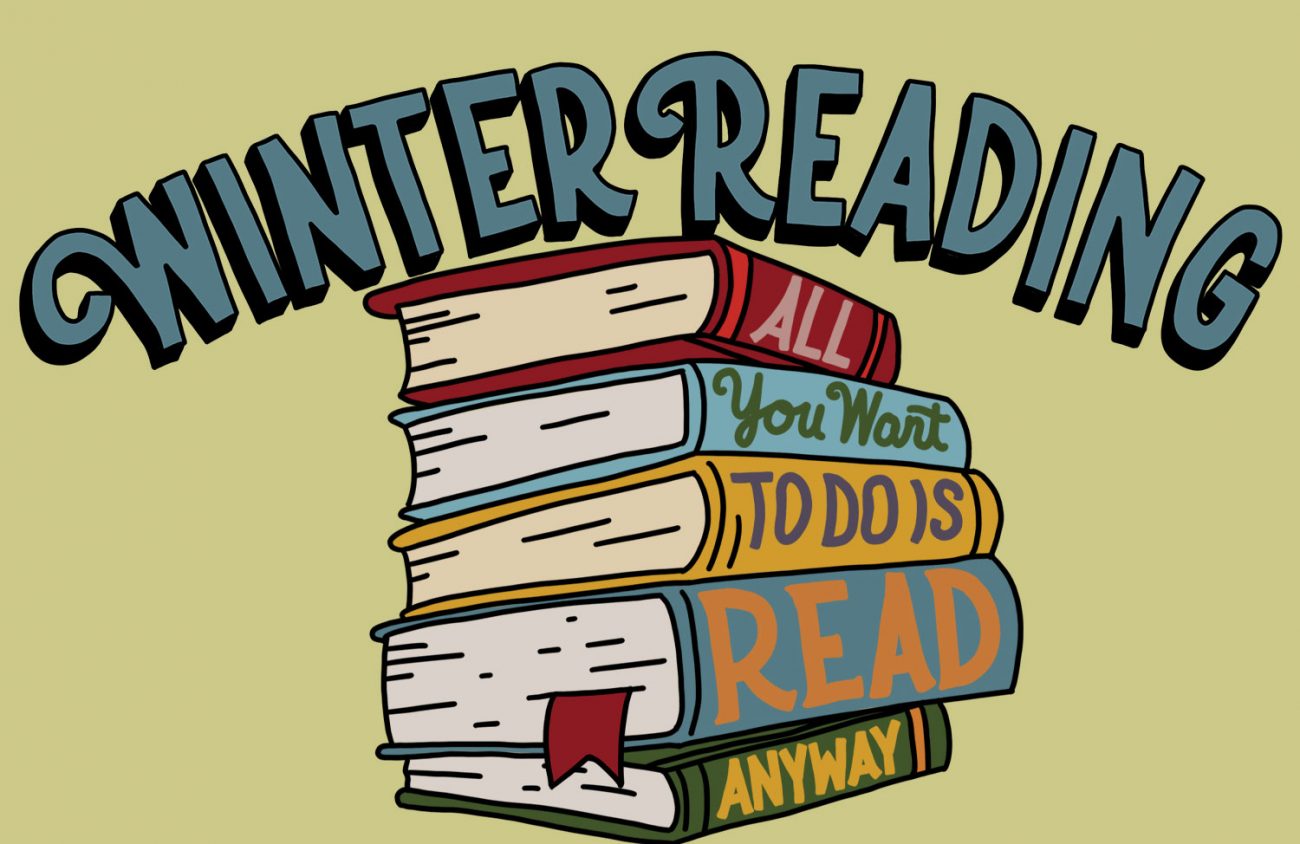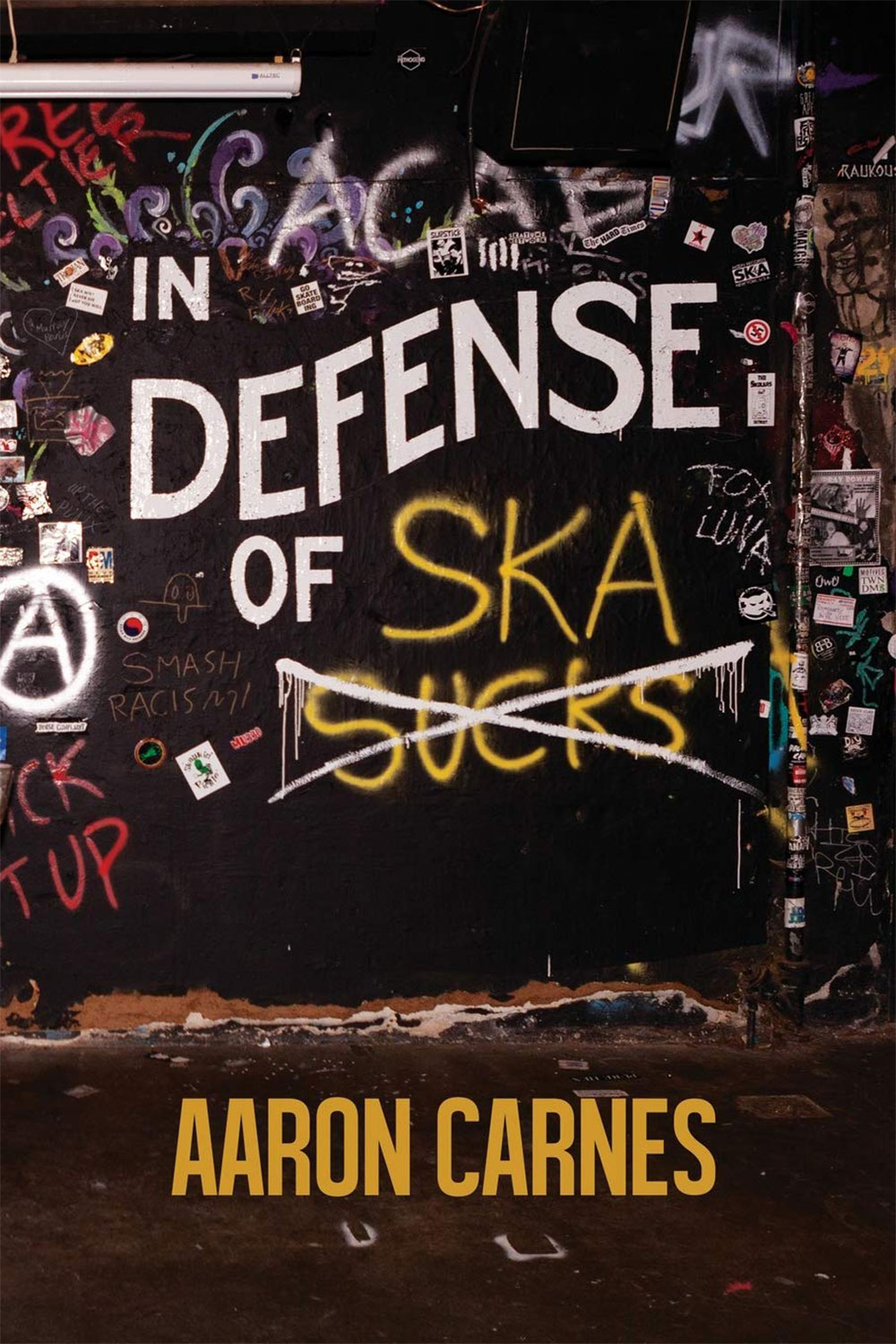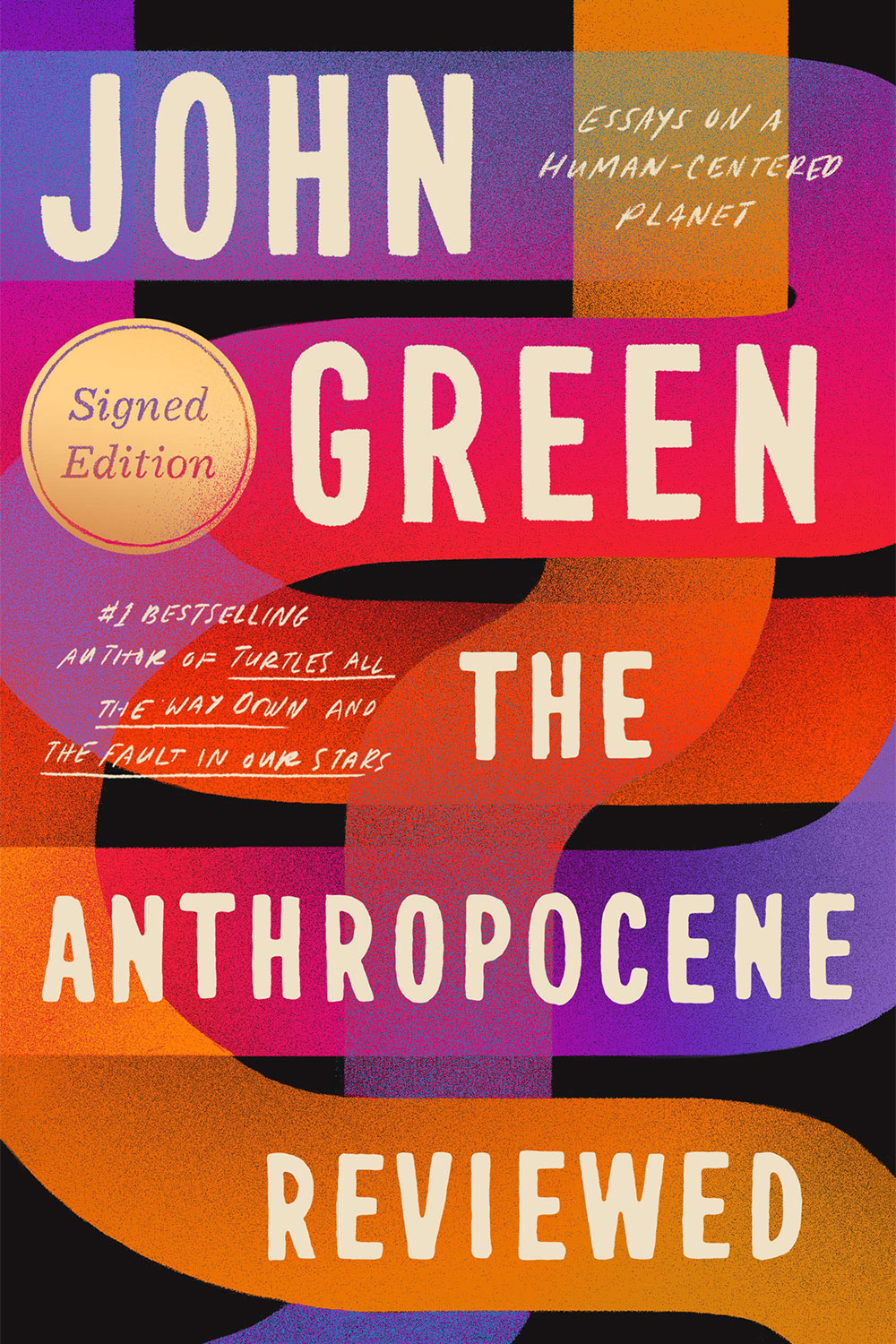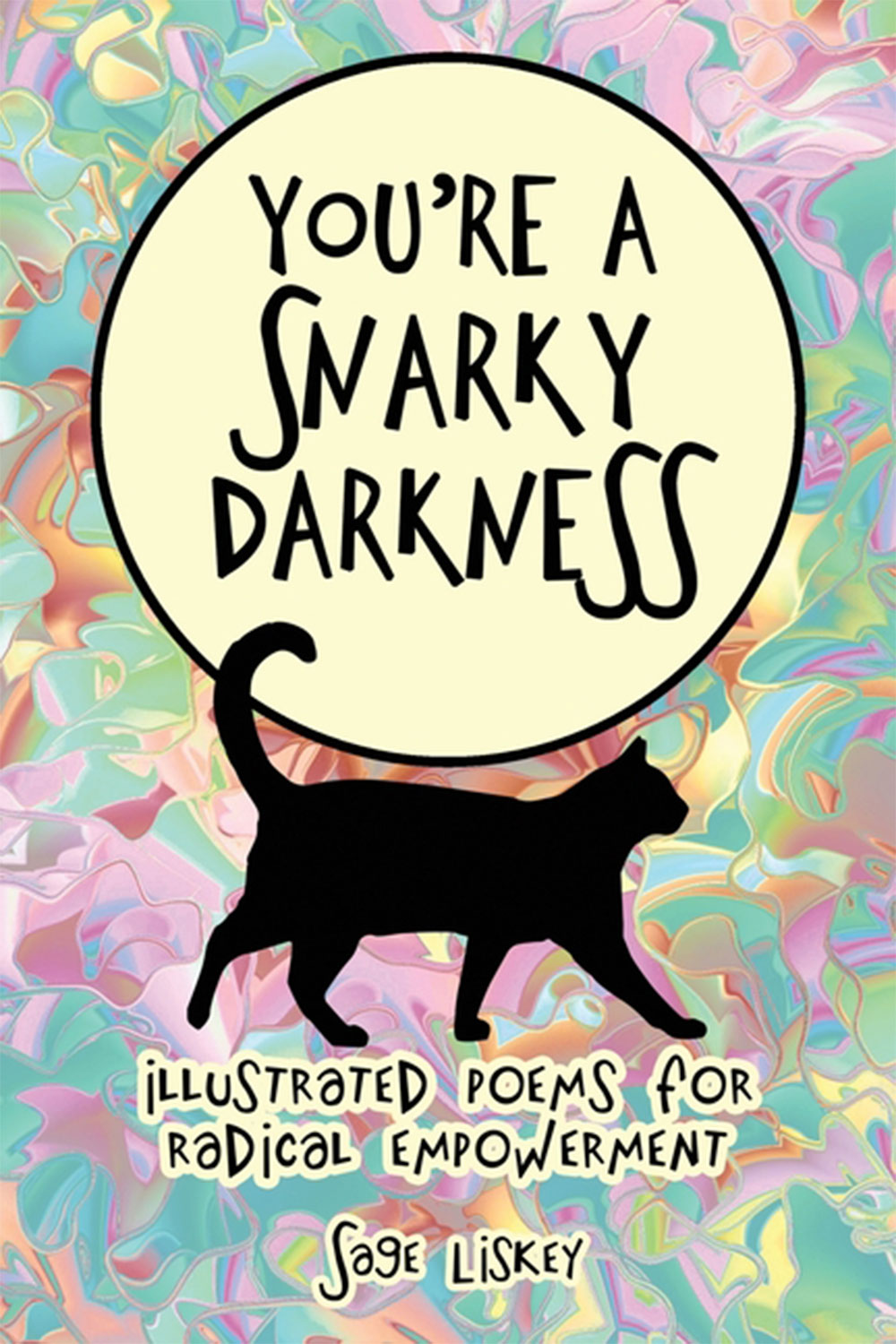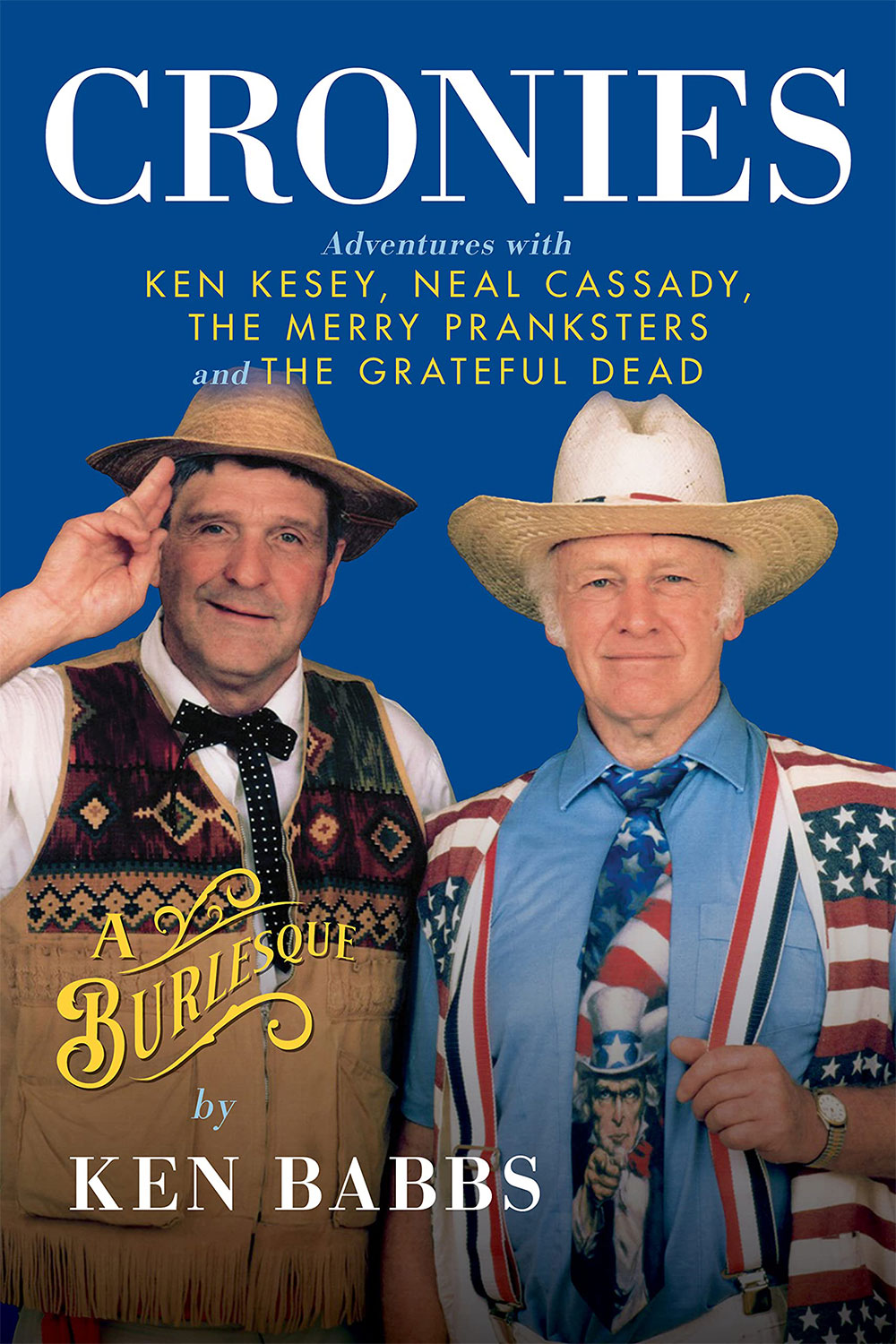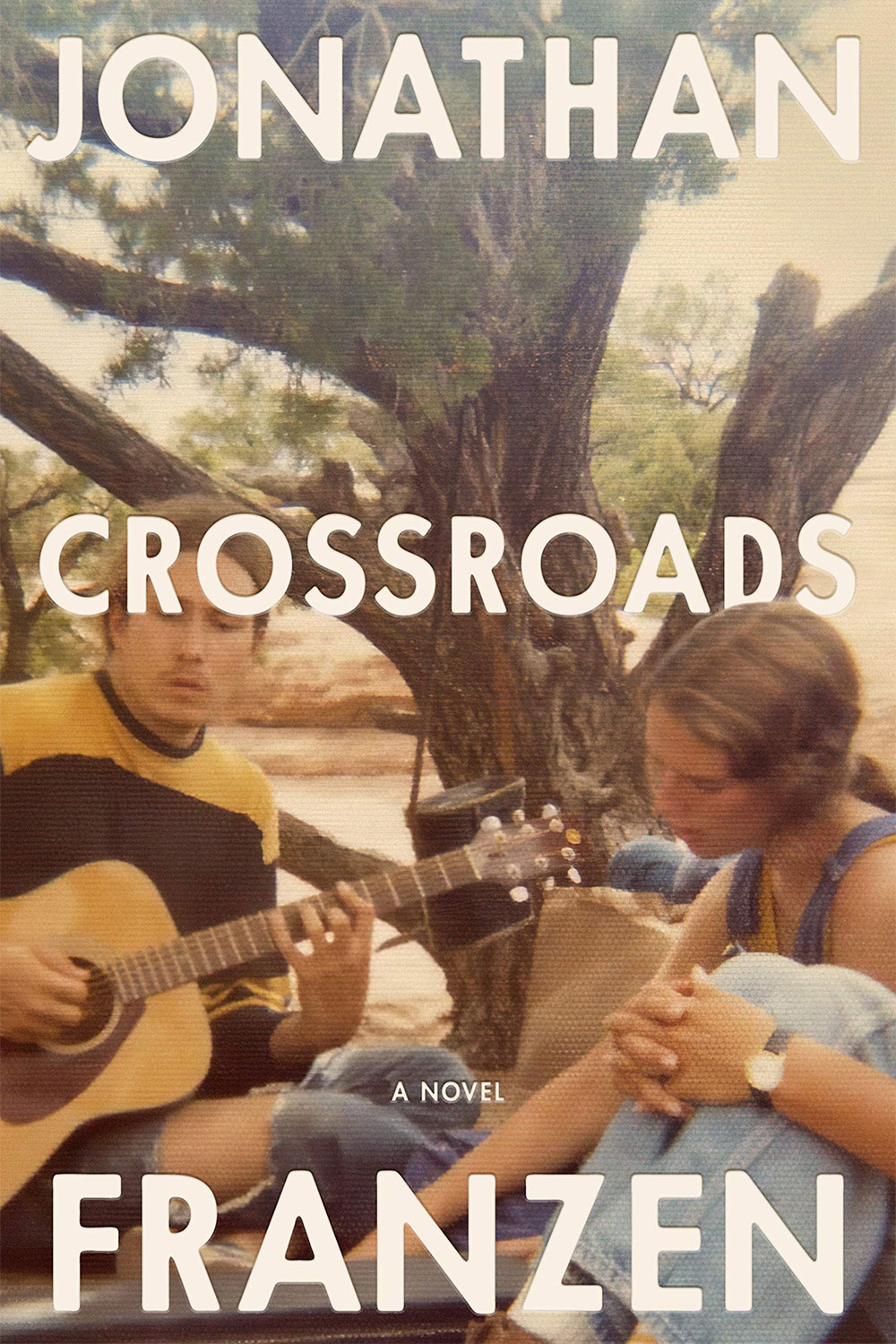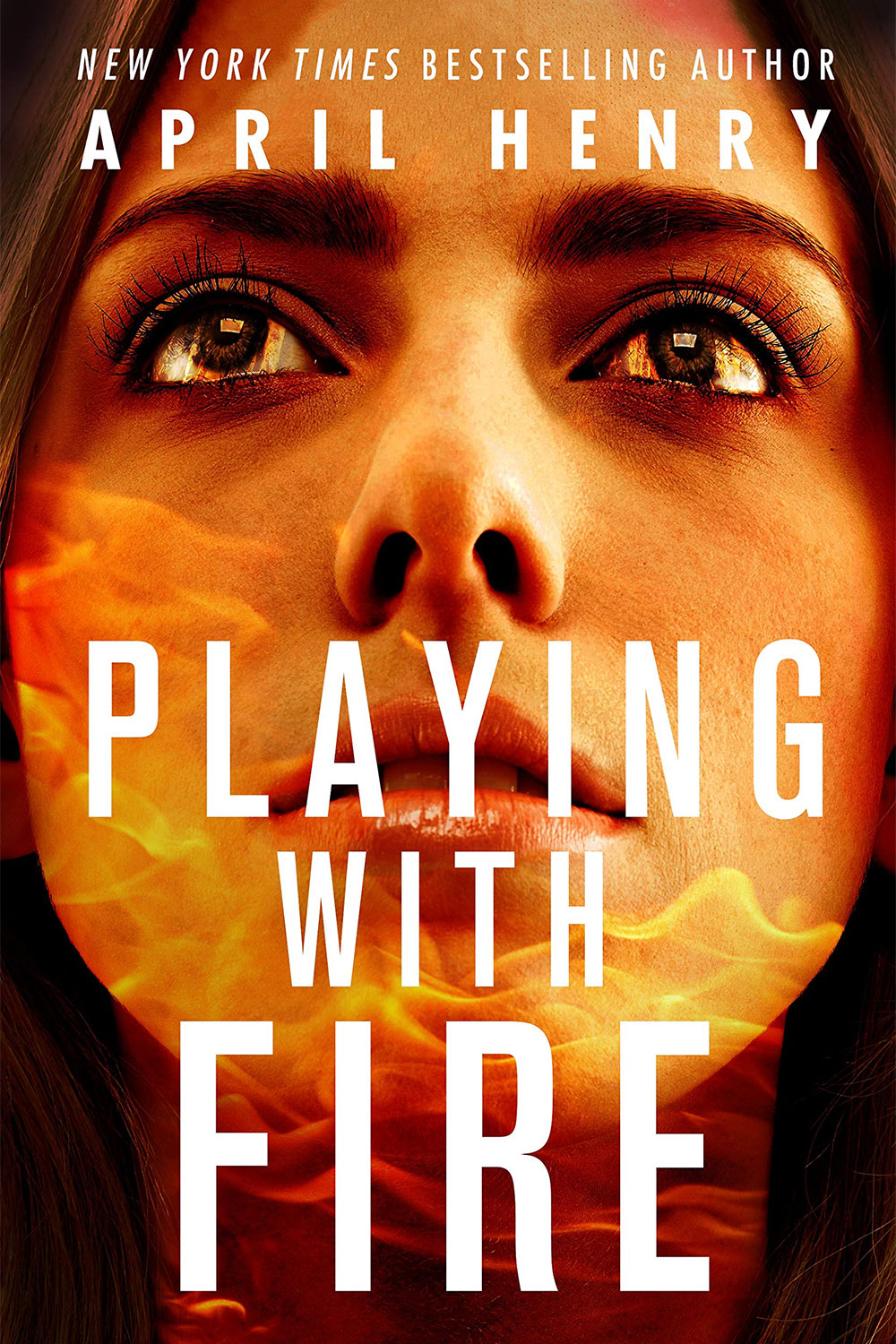Did you read something you loved this year? Did you read something that made you cry or pissed you off? We did. Year after year, in our Winter Reading issue we write about what writers wrote about and published in the past year, with particular focus on local and Pacific Northwest writers. And year after year we dive into words, roll around in the pages and come up for air, only to look for more because it’s just that good. — Eugene Weekly staff
* = Oregon Author
Nonfiction
*Oregon Rocks! A Guide to 60 Amazing Geologic Sites by Marli B. Miller, Mountain Press Publishing Company. $20.
Much of my childhood is filled with geology. I’d go to work with my dad, then a hydrologist for the U.S. Geological Survey, and he’d often stop to tell me about the importance of some rock or formation — whether we were hiking or driving. Sadly, that didn’t result in my becoming some geology prodigy. But decades later, I now have some sort of appreciation for geology, and Marli B. Miller’s Oregon Rocks! A Guide to 60 Amazing Geologic Sites is a great introduction to the state’s geological wonders. Miller tells the formation story of what we call Oregon in an accessible way. She keeps out much of the discipline’s jargon, so anyone can pick up the book and understand Oregon’s natural sites (though it may be helpful to keep a geology dictionary nearby). But geologists need more than words to describe formations, and fortunately the book is filled with informative photos, geologic maps and cross-sections. Miller is a senior instructor and researcher at the University of Oregon and author of other books such as Roadside Geology of Oregon. And with Miller’s recent Oregon Rocks!, I’m now feeling ready to overwhelm my dad with the geologic features of Oregon — though I don’t think he’ll have the same glazed look I had as a child. — Henry HoustonA
*Eminent Oregonians: Three Who Matter by Jane Kirkpatrick, Steve Forrester and R. Gregory Nokes. Primedia eLaunch. $24.85.
If you’re looking to learn some history you may not have been taught in school, Eminent Oregonians: Three Who Matter should be your next read. By authors Jane Kirkpatrick, Steve Forrester and R. Gregory Nokes, this quick read recounts the lives of three trailblazing Oregonians that paved the way for future generations: Abigail Scott Duniway, Richard Neuberger and Jesse Applegate. As with any biography on influential people throughout history, this book provides merely a snapshot into the lives of these individuals within the context of their time. As Forrester, a co-author, tells Eugene Weekly, “Oregon has become such a myth, but these are reality tales.” A consistent theme for me while reading through this book was, as Forrester put it, a string of “‘I didn’t know that’ moments.” For all the history classes I had taken, including a few at the University of Oregon, I’d not heard of anyone like Duniway, who was one of the first women to ever form her own newspaper. So for any history buffs out there looking to expand your knowledge of historical Oregonians, be sure to pick up this volume and give it a read. — Sienna Riley
They Knew: The U.S. Federal Government’s Fifty-year Role in Causing the Climate Crisis by James Gustave Speth, The MIT Press. $27.95.
The constitutional climate case Juliana v. United States, brought by 21 young people — including Eugene-based kids and teens such as the eponymous Kelsey Juliana — has made headlines since it was first filed in 2015. And if you have been following the climate crisis then you have no doubt felt that you and your day-to-day activities have been part of human-caused climate change. That’s true. However, They Knew deftly points the finger at the federal government and lays out its role in supporting the fossil fuel industry and letting the climate reach a boiling point. Take a deep dive into government inaction and legal tangles in They Knew. — Camilla Mortensen
Music
In Defense of Ska by Aaron Carnes. CLASH Books, $18.95.
The English Beat was the first concert I’ve been to. I don’t admit this often since it could place me in the category of ska boy. But I’ll confess that I like ska and I feel OK saying this because of Aaron Carnes’ In Defense of Ska, a vindication of the artform. Here’s the stereotype of ska: horns, upbeat guitar chords, driving bass and drums and some white guy singing about pizza or beer. But Carnes, music editor at Santa Cruz’s Good Times alt-weekly, has dug into the history and the DIY effort to get ska onto records and stages — and how diverse ska is. Carnes’ In Defense of Ska varies in format. At times, it’s a history of the genre. He looks into how ska became Jamaica’s cultural export, the start of the U.K.’s Two Tone ska movement as well as the origins of influential U.S. bands such as Operation Ivy, Reel Big Fish and Fishbone. And other chapters are autobiographical reflections of Carnes’ time playing in a ska band in the ’90s, one of the golden ages of ska. What keeps ska alive through the decades is due to its fans, who Carnes describes as misfits throughout the book. And after reading In Defense of Ska, I feel better about liking ska — and that I know how to “skank.” — Henry Houston
Major Labels: a History of Popular Music in Seven Genres by Kelefa Sanneh. Penguin, $28.
With Major Labels, music writer Kelefa Sanneh of The New Yorker tells the story of the last half century of popular music, positing that the era from around 1970 to the great transformational music industry meltdown circa Napster to be the heyday of the popular music genre itself, not as a whole but in the fractured sum of its parts. Allowing that genre is mostly a marketing tactic — touching on rock, R&B, country, punk, hip-hop, dance and pop, with familiar references and a shared language for anyone who remembers the ’90s — Sanneh also asserts that labels like death metal play an important role creatively, and not just as a social signifier. Sanneh explores the idea that in the differences between genres, popular music is driven forward, and without resorting to “golden age” thinking, he wonders where popular music could be headed, especially now that the primacy of genre is secondary to the 24/7 streaming platforms and the genre-agnostic playlist. — Will Kennedy
Crying in H Mart by Michelle Zauner. Knopf Doubleday Publishing Group, $26.95.
This memoir by Eugene-raised musician Michelle Zauner grew out of the author’s 2018 New Yorker essay by the same name. It centers around Zauner’s relationship with her mother, where their common ground and their love language is food, before and after her mother’s death from cancer in 2014. The story of how Zauner’s indie rock band Japanese Breakfast became “Jimmy Fallon Big!” weaves in and out of the forefront of the novel, with one of the final chapters detailing the band’s international tour culminating in a bittersweet final show in Seoul, with her mother’s family members beaming in the audience as Zauner sang songs written out of the grief of losing her mother. Japanese Breakfast and the band’s most recent album, Jubilee, have both been nominated for Grammys this year. — Jenna Comstock
ESSAYS
The Anthropocene Reviewed: Essays on a Human-Centered Planet by John Green. Dutton Penguin, $28.
This collection of essays by John Green, with titles ranging from “Super Mario Kart” to “Our Capacity for Wonder” are together under the same umbrella because they make up the Anthropocene — the current geological age in which human activity has been the dominant influence — but also because Green rates them all on a five-star scale. With a sense of humor as well developed as his sensibility and investigative tendencies, Green is an expert noticer. He finds the beautiful and the unique in the most unexpected places, and never fails to cite his lens, whether it’s his two-year-old son’s wonder-filled gaze at a leaf or Speedway, Indiana’s throngs of loyal spectators for the annual Indy 500 automobile race. With an introduction that both makes light of and describes with striking humanity his bout with labyrinthitis in 2020, the book is grounded by the author’s willingness to peel back layers — even his own — in pursuit of an answer. In the words of Green, “almost everything easy to mock turns out to be interesting if you pay closer attention.” — Jenna Comstock
*Excuse Me For Yelling! Loud & Funny Thoughts on Being a Woman in the 21st (Going on 13th) Century by Leigh Anne Jasheway. AccidentalComic.com, $15.
Have you missed Leigh Anne Jasheway’s columns in The Register-Guard since our daily paper was sold? Not been able to get out and see comedy or even the annual Eugene SLUG Queen Coronation thanks to the pandemic? Get your comedy fix from Jasheway’s latest book, Excuse Me For Yelling! Loud & Funny Thoughts on Being a Woman in the 21st (Going on 13th) Century. If you are a lady above a certain age (and I have never really been sure what age is meant by that, but Jasheway goes with 30) then you’ll have fun with Excuse Me for Yelling’s bite-sized chapters of humor. — Camilla Mortensen
AUTOBIOGRAPHY
There Is Nothing For You Here: Finding Opportunity in the 21st Century by Fiona Hill. Mariner, $30.
The story of a coal miner’s daughter who heeded her father’s call to leave England and go to America. It’s a mixture of hope and alarm. Fiona Hill became an American foreign policy expert and key witness for former President Donald Trump’s first impeachment. Her book is a great read. — Anita Johnson
POETRY
*You’re A Snarky Darkness: Illustrated Poems for Radical Empowerment by Sage Liskey. Rad Cat Press, $15.
Eugene author Sage Liskey returns with a collection of poems that focus on empowerment. He has told Eugene Weekly in the past that his goal as an author is to motivate and empower people to become their better selves. Liskey has previously published books on the subject — The Happiest Choice: Essential Tools for Everyone’s Brain Feelings and You Are a Great & Powerful Wizard: Self-Care Magic for Modern Mortals. You’re A Snarky Darkness is a collection of poetry written and refined over six years ending in 2020, and it marks a return to Liskey’s first writing ventures. The passion was reignited, he explains in the introduction, when a group of friends showed up from Colorado, and they brought with them a private “Wine and Poetry Night.” Since then, he has published two poetry zines, and now the book. The collection is divided into three sections: “Wine And Poetry Night Year One (2014-15),” “Poems For The End Of The World (2015-17)” and “You’re A Snarky Darkness (2017-20).” The poetry, complete with digital images from the public domain, include short vignettes like “Cat Power” (my favorite) to longer, more provocative pieces such as “Child of Light” and “Divine Intervention.” — Dan Buckwalter
Melancholia by Adam Horvath with illustrations by Valeria Zecchini. Babel Editions, $12.95.
Don’t judge a book by its cover, or in this case a collection of poetry by its name. Melancholia, beautifully laid out and illustrated, is not a trip to the land of depression but rather a visit to “The Absurdist Cafe” where opossum bisque is on the menu, a journey at the warp speed of a snail and a place to find “The Common Fates of Familiar Things.” Horvath’s poems are at times funny, at times whimsical and periodically a little dark, but at all times cleverly readable. — Camilla Mortensen
FICTION
*Star Wars: The Ascendancy Trilogy Timothy Zahn, Del Rey Publishing, $86.97.
Oregon-based Timothy Zahn easily broke the dam for other Star Wars-related writers in the ’90s when he wrote three books (now referred to as the Thrawn Trilogy) set immediately after the Return of the Jedi. Thirty years later, Zahn is still one of the most prolific and respected writers of Star Wars novels and has recently wrapped up a new trilogy. In 2021, he wrote the final two books of his Thrawn Ascendancy Trilogy books, whose main character is a young Thrawn, a beloved character with Star Wars fans for his villainous role in the Galactic Empire that’s been featured in animated TV series such as Rebels. The books are set outside of the main Star Wars storylines in the Unknown Region worlds (meaning outside of the planets from the movies). Similarly to his work with the Thrawn Trilogy, the Ascendancy trilogy brings the patented space opera of Star Wars and world building as he tells the story of Thrawn’s rise through the military ranks. It’s a must-read for Star Wars fans, especially as Disney+ continues to develop TV series that include Thrawn as a character. — Henry Houston
*Cronies: Adventures with Ken Kesey, Neal Cassady, the Merry Pranksters and the Grateful Dead by Ken Babbs. Tsunami Press, $28.
Cronies comes from author Ken Babbs, who lives on a small farm near Dexter. The book is a collection of stories from his adventures around the country in the 1960s and ’70s with the Merry Pranksters, a group of friends led by him and his good pal Ken Kesey. The collection of stories is a burlesque, which the book defines as “a historical account with additions, exaggerations, embellishments and inventions,” Babbs says. “This style really freed me, I could remember scenes and stuff like that, but to finish out the story, I added on what I wanted.” The book includes tales from the Pranksters’ famous road trip from San Francisco to New York in Kesey’s bus, Further, with friend Neal Cassady at the wheel and Kesey recording and filming with other members of the Pranksters. Babbs draws his dialogue from these recordings — Cassady’s raps, Babbs tells Eugene Weekly, are something he couldn’t make up for himself if he tried. Other stories include time spent with Beat writers Allen Ginsberg and Jack Kerouac, watching the Grateful Dead performing at the first Acid Test shows, going to parties with Hell’s Angels, and even an extended stay with the bus in Mexico. “The myth of the ’60s, to me, is growing all the time, everybody’s adding to it,” Babbs says. “It’s like a big mountain all covered in vines and trees. Eventually, 2,000 years from now, all the crap will slough off of it and it will just be this shiny story, and somebody like the Homer of the time will write it. That’s the way it will go down.” — Clayton Franke
My Dead Book by Nate Lippens. Publication Studio, $15.
The opening pages of Wisconsin writer Nate Lippens’ debut novel, My Dead Book, hit me so hard I had to put the thing down for a minute, and when I picked it back up it was with the thrilling knowledge that I was encountering a rare literary moment. Yes, it’s that good and, frankly, that important. Narrated by a kind of living ghost — a middle-aged man recalling the carnage and erasure of coming up gay, broke and hustling in the ‘80s and ‘90s — the novel reads like an unholy and unrepentant sacrament, a defiant act of remembering that seeks at once to resurrect and then lovingly bury the dead who have been all but forgotten by the world: the lost generation of AIDS deaths, disappearances, suicides, overdoses. Pitch-perfect, and punctuated by bursts of withering humor and harrowing loneliness, Lippen’s novel recalls such generational bombshells as Jim Carrol’s Basketball Diaries and Denis Johson’s Jesus’ Son. And yet it is completely its own beast, an episodic shuffling of fading memories (of friends, boyfriends, johns, marks, crash pads, blurry nights and burning dawns) that accrues into something truly remarkable: a heartfelt declaration stripped of all sentiment and illusion, a voice burned clean by desperation, hard experience and ruthless self-interrogation. And that declaration? “I don’t believe in luck,” Lippen’s narrator reveals at one point, “other than marveling at what could have gone wrong and didn’t, and I don’t believe in fate, other than if what goes wrong keeps happening it will create a pattern which necessitates a certain type of resolution.” In this novel, resolution in defeat becomes its own hedged triumph, and Lippen’s powerful conjuring of a specific time and place becomes something much more—a slouching toward transcendence, even grace. This is the most accurate, and honest, and gorgeously written book I’ve read about my generation. Its wise and wickedly wise-cracking detachment belies an aching empathy, and its scar tissue traces a map of embattled identity. And for all its darkness and brutal honesties, My Dead Book is deeply alive. — Rick Levin
Crossroads: A Novel by Jonathan Franzen. Farrar, Straus & Giroux, $30.
“All happy families are alike,” Leo Tolstoy posited, “but every unhappy family is unhappy in its own way.” The very unhappy family at the center of Jonathan Franzen’s new novel is not only unique in its suffering, caught between love, lust and a weary flavor of Christianity; the Hildebrandt family is also meticulously observed by Franzen over a span of generations in this nearly 600-page saga. The main story is set in the early 1970s — Richard Nixon is president of a country that’s absorbing the drama and trauma of the ’60s civil rights movement and navigating the final days of the Vietnam War. Russ Hildebrandt, associate pastor of a church in the Chicago suburbs, struggles with a loveless marriage, his infatuation with a younger, slimmer parishioner and his humiliation by the charismatic director of the church’s very ’70s-ish youth program — think guitars and EST-style encounter groups — named Crossroads. Meanwhile his children are embarrassed to be around him, and Marion, his once-intoxicating, now-frumpy wife, begins to discover that she can stand on her own without him. This is, perhaps surprisingly in 2021, a page-turner of a novel about family and religion that actually works at every level. — Bob Keefer
*Sacred City by Theodore Van Alst Jr. University of New Mexico Press, $20.
Theodore Van Alst Jr.’s second book, Sacred City, paints a brilliant mosaic of the grimy, forgotten corners of inner city Chicago through the eyes of a young Indigenous man. Woven into a narrative by a set of loosely connected stories, the book follows young Theo as he romps through the city alongside a cast of vibrant characters. He smokes weed with an eloquent Ukranian limo driver, wars with Latin King gangbangers and hears stories of the distant past from his tribal elder grandfather, all the while never failing to recognize the contradiction of his own existence: he is a living reminder of the white man’s genocide against his people, forced into assimilation by the backwards rules of their capitalist society. — Cole Sinanian
*Tainted Times 2 by Valerie J. Brooks. Black Leather Jacket Press., $14.95.
I am a sucker for a mystery and for anything set in the Pacific Northwest, so local author Valerie J. Brooks’ Tainted Times 2 is a two-fer for me. The second in Brooks’ series on attorney Angeline Porter, the book kicks off in Hawaii where Angeline has been in hiding due to events related to her sister’s death that played out in the first book, Revenge in 3 Parts. Angeline, who drinks too much and loves her rescue dog (things I relate to) discovers she appears to have yet another sister and the mystery deepens. The pace is fast-moving and Angeline is soon back in Eugene hanging out in places like the Fifth Street Market. Readers of local writer LJ Sellers’ Eugene-based mysteries will no doubt enjoy Brooks’ works as well. — Camilla Mortensen
Truth of the Divine: A Novel by Lindsay Ellis, MacMillan Press, $28.99.
Popular YouTube media critic Lindsay Ellis’ sequel to Axiom’s End continues to explore an alternate reality of the early 2000s during which an alien civilization makes first contact with humans. In her first book of what’s now called the Noumena series, Ellis wrote a fast-paced story of a young woman going nowhere in life who becomes a translator for an alien, communicating on his behalf to U.S. intelligence officials. The second book slows down the pace of the human-alien first contact. Rather than moving like a Hollywood blockbuster, the sequel slows down, offering a story similar to Liu Chixn’s Three Body Problem series (without the overwhelming hard science), but with an American hyperpartisan twist. Ellis has in turn created a world that feels realistic to the question of what if the public knew the U.S. government was communicating with aliens and would they be OK with granting aliens full human rights. — Henry Houston
*The Ship in the Woods: A Historical Novel by William L. Sullivan. Navillus Press. OregonHiking.com, $14.95.
Sure, you know William Sullivan is a prolific writer of popular hiking guides with extremely useful hand-drawn maps, but did you know the longtime Register-Guard (and once-upon-a-time Eugene Weekly) hiking columnist also writes historical novels? Also, he tells Eugene Weekly, he speaks Danish. This last fact is more relevant because his series of novels about Vikings involves at least one with a Danish focus — The Ship in the Sand — and because Sullivan’s attention to detail in the Nordic universe he has created is as meticulous as the directions in his hiking guides. The third in the series, The Ship in the Woods, alternates between Swedish Vikings of 1,000 years ago and archeologists in the 1960s. The book not only draws you in through its plot centering on a powerful female Viking, but Sullivan also employs his illustrative and mapmaking skills in his fictional works, making The Ship in the Woods visually enjoyable to read as well. — Camilla Mortensen
YOUNG ADULT
*Playing with Fire by April Henry. Henry Holt & Co., $17.99
Part crime thriller, part survival story and part teenage romance, this YA novel packs a lot of action into just over 200 pages. It is inspired by the Eagle Creek Fire that burned around 50,000 acres of forest in the Columbia Gorge in 2017, and it hews closely to the true story. It centers around Natalia, a teenager who does not like taking risks after a traumatic experience as a child. On a maybe-date with her outdoorsy coworker Wyatt, she goes on her first hike — and gets trapped in the forest when a forest fire cuts off the trail. Along with a group of other casual hikers similarly caught, Natalia must make her way out of the forest before the fire overtakes them. Sprinkled throughout the novel are useful tips on wilderness survival that Natalia and Wyatt have picked up through Red Cross certification classes or Boy Scouts, though the specific, expository reasons for knowing that information often feels a little too perfect. It’s a short and easy read with enough cliffhangers to get caught up in that you might find yourself finishing it in one sitting. — Gina Scalpone
*Stuck in a Boys Camp! by Ann Herrick. Chaucer Publishing. $7.95.
There is a whole genre of young adult novels that is just about summer camp. They’ve been around since at least the 1970s — which is when I first dove into the genre and dreamed of some day going sleepaway camp — and are still popular today. Stuck in a Boys Camp! is both a delightfully typical example in that the kid isn’t thrilled about going to camp, yet meets friends and has good experiences, and also puts a twist on it as 11-year-old Ellie discovers she’s off to spend her summer at a boys camp where her mother will be a nurse. Ellie’s adventures with and (sometimes incorrect) judgements about her fellow campers are relatable and make for a fun romp. — Camilla Mortensen
CHILDREN’S
Be Kind: a Jack the Mouse Story by Kate Juliana, illustrated by Steve Taylor. KateCJuliana@gmail.com.
The premise for this children’s book is as important as it is simple: Be kind. The illustrations are charming and the moral is easy to understand, even for the littlest ones, a perfect book for bedtime reading. — Camilla Mortensen
*The Hippo-Critic, El Hipo-Crítico, Little Big Bear and other children’s books by Chef Andre Royal, illustrated by Andre Royal Jr. Aurora Books/Eco-Justice Press.
Entrepreneur and author Andre Royal, aka Chef Andre, long dreamed of being a writer. And with his children’s books like The Hippo-Critic and The Little Bear, illustrated by his son Andre Royal Jr., not only has he made that dream come true for himself, but he has also worked to make the dream of reading and book ownership accessible to the kids he is writing for. The books are in English as well as in Spanish translation and ESL versions in English and Spanish with translations by Christian B. Campos. The illustrations with broad bold strokes are not colored in — so that the kids can color their own books themselves. The “chef” in Chef Andre comes from the social media presence he developed preparing and posting elaborate dishes, he tells Eugene Weekly. The hippo at the heart of The Hippo-Critic is a chef turned harsh food critic who perhaps learns a lesson in the end. Find out more about Chef Andre, his books and nonprofit work at ChefAndreRoyal.com.— Camilla Mortensen
